Posted on April 3, 2017
WHEN YOUR CHILD STRUGGLES WITH WRITING
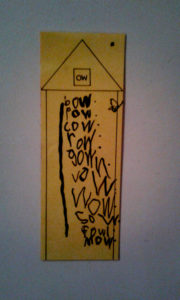 What do you do when your child shows an aversion to writing? Or when your child is in their 3rd grade and you still have to go back over the basics of writing with them because they are confused about letters or struggling to write? How can you help your child who seems exhausted after writing the simplest sentence?
What do you do when your child shows an aversion to writing? Or when your child is in their 3rd grade and you still have to go back over the basics of writing with them because they are confused about letters or struggling to write? How can you help your child who seems exhausted after writing the simplest sentence?
Some people think that a child who struggles in this way is just acting up or has behavioural issues. However, one needs carefully consider all the criteria and assess whether the child is acting up, or genuinely has trouble conveying data from the brain to the fingers to write; a condition called Dysgraphia.
What is Dysgraphia?
A person who has Dysgraphia struggles to process words that are written (or in some cases heard) into the movement of the muscles which are used for writing (fine motor skills). It often, but not always, overlaps with other learning disabilities such as Dyslexia, Attention Deficit Problems, etc.
A child who struggles with Dysgraphia is often emotional when it comes to writing, they may cry, become angry or appear stubborn and refuse to write. The feelings of inadequacy and the knock to their self- esteem can be crippling if not dealt with in a way that empowers the child.
How does one help a child who has Dysgraphia?
- The first thing to do is to go back, way back to before they started writing. All fine motor skills stem from gross motor skills. Get them to move, work on strengthening their core muscles and their upper bodies.
- Make the alphabet using playdough.
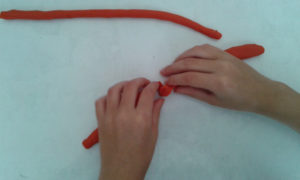
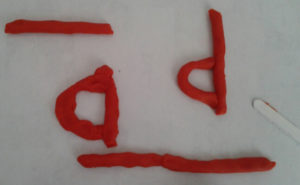
- Cut the alphabet out in different textures of material and let the child trace the letters with their index finger.
- Draw the alphabet in the sand or write words in the sand using a stick. (Big movements of the arms from the shoulder are important here.)
- Make up some cookie dough and let your child roll the dough into sausages and then make letters out of the cookie dough. We flattened the dough to allow even cooking of the letters.

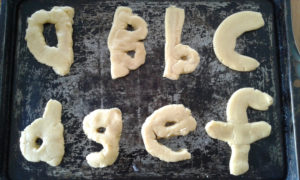
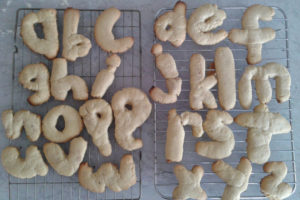
- Writing with a whiteboard marker on a window. The thickness of the marker helps toward a better grips as the child struggles with fine motor manipulation of the pencil.
- Use blank paper without lines. This reduces the stress these children experience at trying to stay on the lines or within specific lines.
- One can also allow the child to give answers which the teacher can write down in the appropriate place.
- Give small amounts of work at a time with breaks to allow the child to rest between exercises.
- Simple cutting exercises are also important it will exercise the finger muscles.
- Let your child make food with you, scrub or peel potatoes or any other baking activity.
- These are just a few ideas to help you on your way. There are many other activities one can do with a child, based on their particular needs.
NOTE: When the child is writing with a pen or pencil, it is important to establish a proper pencil grip as children with Dysgraphic tendencies will change their grip often or hold the writing instrument at awkward angles. Buy a pencil grip that fits over the pencil to position the thumb, index and middle fingers correctly for writing.

Recent Comments